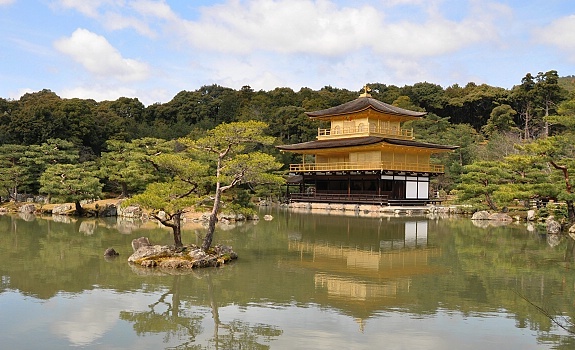
Kinkakuji is an impressive structure built overlooking a large pond, and is the only building left of Yoshimitsu's former retirement complex. It has burned down numerous times throughout its history including twice during the Onin War, a civil war that destroyed much of Kyoto; and once again more recently in 1950 when it was set on fire by a fanatic monk. The present structure was rebuilt in 1955.
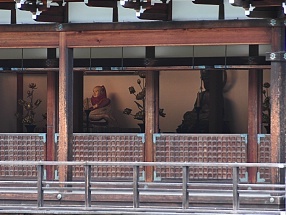 | 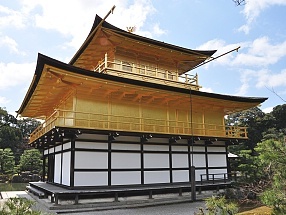 |
The first floor is built in the Shinden style used for palace buildings during the Heian Period, and with its natural wood pillars and white plaster walls contrasts yet complements the gilded upper stories of the pavilion. Statues of the Shaka Buddha (historical Buddha) and Yoshimitsu are stored in the first floor. Although it is not possible to enter the pavilion, the statues can be viewed from across the pond if you look closely, as the front windows of the first floor are usually kept open.
The second floor is built in the Bukke style used in samurai residences, and has its exterior completely covered in gold leaf. Inside is a seated Kannon Bodhisattva surrounded by statues of the Four Heavenly Kings; however, the statues are not shown to the public. Finally, the third and uppermost floor is built in the style of a Chinese Zen Hall, is gilded inside and out, and is capped with a golden phoenix.
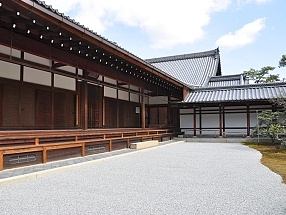 | 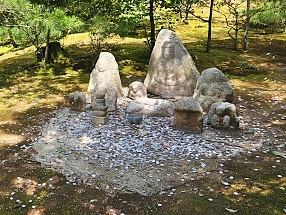 |
Continuing through the garden takes you to the Sekkatei Teahouse, added to Kinkakuji during the Edo Period, before you exit the paid temple area. Outside the exit are souvenir shops, a small tea garden where you can have matcha tea and sweets (500 yen) and Fudo Hall, a small temple hall which houses a statue of Fudo Myoo, one of the Five Wisdom Kings and protector of Buddhism. The statue is said to be carved by Kobo Daishi, one of the most important figures in Japanese religious history.
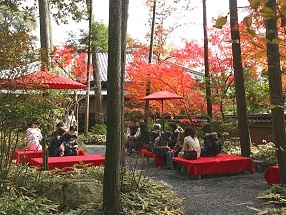 | 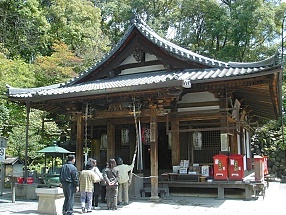 |




No comments:
Post a Comment